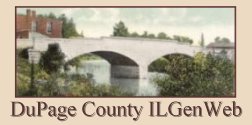 |
 |
 |
A History of the Town of Lisle
 |
 |
 |
"This is the oldest town in the county, having been first settled by Bailey Hobson, in the fall of 1830. Among the early settlers were J.C. Hatch, Isaac Clark, Pomeroy Goodrich, John Thompson, John Sargent, Lewis Ellsworth, Thomas Jellies, Martin Asher, J., C., H., and L. Stanley, E. Bush, Mr. Willard, Henry Puffer, A.B. Chatfield, John Naper, and R.M. Sweet. "The increase in population has been in about the same ratio as that of the other towns in the county. In contains now about 1500 inhabitants, of which there is a fair sprinkling of Germans." "The inhabitants are chiefly devoted to agriculture. The farmers generally have large and highly cultivated farms, and are in independent circumstances. Land is held at from twenty-five to fifty dollars per acre, the price varying according to locality and nature of soil. Among the best farms upon the east branch are those of James C. Hatch, John Thompson, D.H. Naramore, Pomeroy Goodrich, Daniel M. Green, William B. Green, A. S. Barnard, A. Morse, and Charles H. Goodrich." "About the middle of May, 1830, Bailey Hobson, weary of the toil of clearing the encumbering forests from the rugged banks of the Ohio river, and animated by the hope of finding a home in the wilderness of the northwest...set out from the sparsely settled county of Orange [Indiana] for the mores sparsely settled section of northern Illinois. "His resolutions were those of the pioneers of the west. Without arms amounting to more than a jack-knife, for defense, he mounted his horse, and destitute of chart or compass, groped his way, as best he could, through the dense forests and deep ravines, and forded the bridgeless waters that lay in his course...Emerging from the heavy timber country of Indiana, into the prairie wilderness, was an agreeable respite from the dull monotony of the scenery through which he had passed." He "pushed onward, soon reaching Weed's Grove, since known as Holderman's grove, where he found a settlement of five little huts, occupied by as many families. Here, for the first time in his journey, he made a halt, and explored the Du Page river as far as Walker's grove, near Plainfield. He afterwards explored Fox river as far as Long grove, and finally made a claim six miles from Holderman's and three miles from the main village of the Pottawattomie Indians, on Fox river... "The family were moved to the claim, and lived in a tent until the cabin was so far completed as to admit of their occupying it." "Other settlers, whose names have been given soon located in different parts of the town. The Naper settlement extended into this town, and the pioneer reminiscences contains an account of the settlers here, up to the close of the Black Hawk war. "This town embraces an area of thirty-six square miles, and is bounded by Milton on the north, by Will county on the south, by Downer's grove on the east, and by Naperville on the west. The surface consists chiefly of rolling prairie, interspersed with groves of fine growing timber. This town was formerly called Du Page, a name derived from the river, both forks of which run through it, bu there being a town in Will county of the same name, it was organized in 1850, under the name of Lisle, in honor of the late S. Lisle Smith, of Chicago. "That part of the village of Naperville which lies in this town includes the county buildings and four churches. The grist mill at Hobson's was among the first established in this part of the county. Brick making is carried on to a considerable extent, and the bricks manufactured are of good quality. The clay requires coarse sand to be worked with it, to give it compactness. At the establishment of Mr. E. M. Carpenter 275,000 were made last year..." "There are in this town nine school districts, in all of which schools are taught throughout the school year. Teachers of the best ability are usually employed, and rewarded by a fair compensation. The almost universal custom of rotation in the employment of instructors for our schools prevails in this town, the summer term being taught by females, and the winder term by males. The schools are attended by 310 scholars. The fund derived from the sale of the school section was $800. It now amounts to $1,011.66. The amount paid to teachers last year was $820, and the amount expended for repairing and building was $1,830. "Several stone quarries have been opened in this town, from which stone is obtained for lime burning and for building purposes. The Naperville and Oswego plank road was laid through the central part of this town. The projectors of this road thought to facilitate the communication between Oswego, Naperville and Chicago, and thereby retain the travel which would otherwise be drawn to the railroad which was being built at the same time. "The road was completed from Chicago to Naperville, but no farther. The project was a failure; the stock was worthless, for people would travel by railroad. The material of which the road was constructed is now being town up and converted to other uses." Back to Lisle TownshipBack to DuPage County ILGenWeb |